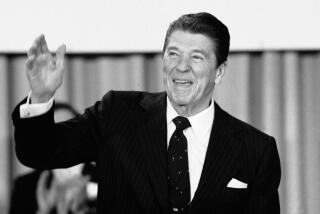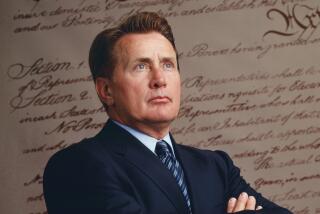A Wizard in the White House : ‘The Agenda’ unwittingly shows how a focus on access impoverishes journalism : THE AGENDA: Inside the Clinton White House, <i> By Bob Woodward (Simon & Schuster: $24; 334 pp.)</i>
- Share via
For nearly two decades, Bob Woodward has methodically burrowed into major institutions of American government seeking to describe how decision makers make decisions. Every few years, in what has become one of the capital’s best-scripted rituals, a new Woodward project is launched into the world. First, he tackled/went after/did/ the Supreme Court (“The Brethren”), then--(after a detour to write about the comedian John Belushi)--the CIA (“Veil”), next the Pentagon (“The Commanders”) and now, with “The Agenda,” the presidency.
While each of Woodward’s books differs, what all have in common is the author’s stock in trade: access. Each promises readers the “inside story,” the “behind the scenes” view that will explain not what appears to be happening but what is really going on.
Access, of course, feeds on itself. By now, Woodward’s reputation as an indefatigable and irresistible investigator--he is now an assistant managing editor at the Washington Post--has grown so imposing that few in official positions are brave enough to resist his entreaties to talk. After all, the high-level official reasons, if everyone else is going to talk to Woodward and do his best to make himself look good, how can I afford to hold out?
Moreover, access is to Washington what star quality is to Hollywood. For many Administration aides, toiling away their days and nights in obscurity, being interviewed by Bob Woodward is a validation and a reward.
Officials always begin with the belief that they can control how far the exchange will go. Some do. From the generally positive accounts “The Agenda” offers of Treasury Secretary Lloyd Bentsen, for example, one can assume that Bentsen and his friends and aides handled their side of the access bargain well. Inevitably, however, some go too far, revealing more than they intend.
The unstated premise of Woodward’s work--and of access journalism in general--is that, as in “The Wizard of Oz,” what the public sees is actually just a show manipulated by those who stand behind the curtains. Gain access behind the curtains, and one can unmask the real truth.
“The Agenda” raises some doubts about that premise. To begin with, the book, while lively and often interesting, contains no real revelations. Were “The Agenda” a newspaper story, the headline might read “Clinton Economic Program More Conservative Than Campaign” or, in a less sober publication, perhaps, “President Has Bad Temper, Powerful Wife.” A reader does not need Bob Woodward’s access to deliver those insights.
What a reader does want Woodward’s access for are the details--the lovingly collected anecdotes and bits of color that bring life to the otherwise dull matter of government decision-making.
Of course, it is precisely the details of Woodward’s work that always come clouded by his technique. As in his previous books, Woodward indulges his penchant for re-creating dialogue--putting into the mouths of his characters words he did not actually hear them speak during meetings he did not attend. In his introduction, Woodward describes the technique, explaining that he derives the quotations from memos, notes, diaries or the recollections of participants; he offers the not-entirely-reassuring statement that he has at least one source for each fact he cites.
Given Woodward’s experience and reputation, there is no reason to think he has not faithfully reported what his sources told him. But given the frailty of human memory and the tendency of people to recall only what they want, even in their memos and diaries, there is no reason to think that the sources got it all exactly right.
Nonetheless, while one may question the exact words or sequence of events Woodward reports, he has clearly caught the flavor, the tone and the substance of those hectic first few months of the new Administration.
Many of his details are telling and vivid. There is Bill Clinton wowing Laura Tyson, who would soon become chair of the Council of Economic Advisers, by remembering an article she had written in the American Prospect, a small-circulation liberal magazine. There is Hillary Rodham Clinton dressing down the President’s staff for failing to find an adequate way to sell his program to the public. There is Bill Clinton, again, shouting an epithet at Nebraska Sen. Bob Kerrey when the senator says he plans to vote against the Administration’s budget.
Those are the highlights of the book, engaging portraits of some of the Administration’s main actors, beginning with the President himself--highly intelligent, deeply committed to his programs, but plagued by indecision, petulant when frustrated and at times baffled by the conflicting demands of his job. No doubt Clinton’s admirers and detractors will both find evidence here for their positions. Those yet to make up their minds about the President, however, may find themselves wishing Woodward had made the effort to analyze, rather than just present, the anecdotes he has amassed.
Indeed, that is the drawback of Woodward’s approach: Large doses of access, like large amounts of sunlight, can blind as well as illuminate.
The central narrative of “The Agenda” describes how, during the first seven months of the new Administration, Clinton abandoned much of the economically populist, “putting people first” economics of his campaign in favor of a package that focused on deficit reduction. Woodward’s book shows that process happening but explains little of why.
Woodward has two main problems. First is that, in his emphasis on describing the process, he says little about the substance. For a book about economic policy-making, this one contains precious little economics. A reader could easily walk away from “The Agenda” wondering what exactly it was that all these people were arguing about.
The second problem is that large amounts of the detail Woodward amasses are not only behind the scenes but also, in the end, beside the point. While Woodward’s goal may be to show where real power lies, what he displays, in fact, is that much of the frantic action of White House aides, Administration officials and congressional barons is just so much wasted motion.
As Woodward notes, and as many news reports pointed out before the election, simple arithmetic left no doubt that some major part of Clinton’s economic program would have to disappear. Political arithmetic left no choice which. From the moment of his election, in which he won only 43% of the vote, Clinton would face overwhelming pressure to cut spending and scale back his plans for a more ambitious federal government.
Seen in the light of insider access--the light of Woodward’s material--the meetings between Clinton and Alan Greenspan, chairman of the Federal Reserve, and between Greenspan and top Clinton advisers, seem to take on great significance. Indeed, Woodward’s publicists have trumpeted those meetings to a degree that the book itself does not.
In the light of political reality, however, the meetings shrink in importance. Clinton followed the path Greenspan advocated, emphasizing deficit reduction, not because he somehow had fallen under the Fed chairman’s spell but because he had no choice.
Woodward knows this. Periodically he will note, often quoting one or another of his cast of characters, how precious little maneuvering room Clinton had as he put together his economic plan and lobbied for its passage on Capitol Hill. Yet, ultimately, the truth is a conclusion he cannot quite articulate--unlike the Wizard of Oz, the men and women behind the curtain are not grand manipulators, but just another bunch of Munchkins like the rest of us.
More to Read
Sign up for our Book Club newsletter
Get the latest news, events and more from the Los Angeles Times Book Club, and help us get L.A. reading and talking.
You may occasionally receive promotional content from the Los Angeles Times.









